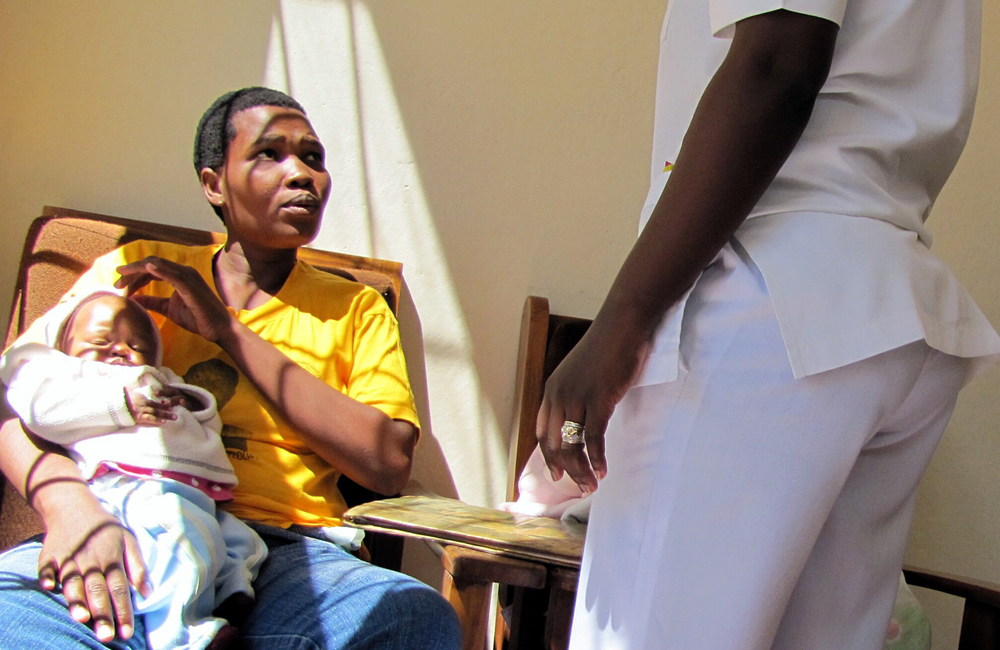
One in ten Namibian infants with HIV had tenofovir resistance and one in six had resistance to abacavir before starting treatment, while two-thirds had resistance to a non-nucleoside reverse transcriptase inhibitor (NNRTI). The study investigators say the level of resistance to tenofovir is the highest observed in any country study to date and highlights the need to accelerate access to alternative antiretroviral regimens for young children.
One in seven had HIV resistant to lamivudine and emtricitabine and almost one in five had resistance to at least one nucleoside reverse transcriptase inhibitor (NRTI) and to efavirenz and nevirapine, the study found.
Despite a 53% decline in mother-to-child HIV transmission between 2010 and 2019, UNAIDS estimates that 150,000 infants acquired HIV during pregnancy, delivery or through breastfeeding in 2020. Infants can acquire drug-resistant virus from their mothers.
Acquired, or pretreatment, drug resistance can undermine the effectiveness of treatment and limit the options available for treatment. Infants may have higher viral load and more rapid disease progression, so they need the most potent antiretroviral regimen possible when starting treatment.
The World Health Organization recommends that infants below 4 weeks old should receive a regimen of raltegravir, zidovudine and lamivudine. Infants aged 4 weeks and over should receive dolutegravir, abacavir and lamivudine. Pretreatment resistance could compromise each regimen, as adult first-line treatment usually contains emtricitabine or lamivudine. The World Health Organization recommends that countries should carry out a survey of pretreatment drug resistance in infants every three years, to help fine-tune treatment recommendations to the national drug resistance profile.
Namibia carried out its first survey on dried blood spot samples stored in 2016 from all untreated infants diagnosed with HIV that year. The study was led by Dr Michael Jordan of Tufts University School of Medicine, Boston.
" All children diagnosed with HIV should be tested for drug resistance, especially if the mother’s treatment has failed."
The study genotyped 262 specimens. It was possible to amplify protease and reverse transcriptase sequences from 198 samples and integrase sequences from 118 samples. Sequencing may be unsuccessful if virus levels are too low.
Sixty-five percent of samples showed NNRTI resistance (mutations classified as low-, medium- or high-level resistance on the Stanford resistance algorithm), 20% showed nucleoside reverse transcriptase inhibitor (NRTI) resistance, 18% showed resistance to both an NRTI and an NNRTI (efavirenz or nevirapine), 17% showed resistance to abacavir and 10% showed resistance to tenofovir. No resistance to any integrase inhibitor was detected and only 1.5% of samples showed resistance to a ritonavir-boosted protease inhibitor.
The majority of samples showing abacavir resistance (68%) were predicted to have high-level resistance caused by the presence of the M184V mutation in combination with the K65R mutation or a thymidine analogue mutation (thymidine analogue mutations are caused by exposure to zidovudine or stavudine).
Six percent of samples had tenofovir resistance associated with the K65NRE mutation. In a further 4% of samples, high-level tenofovir resistance was predicted due to the presence of at least two thymidine analogue mutations. The study investigators say the prevalence of tenofovir resistance in this survey is the highest reported by any country survey up to 2021. Although tenofovir is not used in first-line treatment of children, it is recommended as a component of second-line treatment for older children and adolescents.
“Observed levels of tenofovir and abacavir resistance are high and concerning – a finding that suggests prolonged maternal virological failure,” the study investigators conclude. “Results from this study suggest the need for caution when using abacavir and [lamivudine] with drugs that have a low genetic barrier for resistance (eg. nevirapine or raltegravir).”
The study investigators say their findings have several implications for national treatment programmes:
- Mothers with HIV, infants and children need to receive more frequent viral load monitoring than the rest of the population due to the potential for transmission of drug-resistant virus if viral load remains unsuppressed and rapid disease progression.
- Access to viral load testing needs to be improved so that monitoring is available for all.
- Prompt management of virological failure in mothers and of high viral load in children diagnosed with HIV.
- All children diagnosed with HIV should be tested for drug resistance, especially in cases where the mother’s treatment has failed.
As well as improving management of pregnant women with HIV and infants diagnosed with HIV, more attention is needed to developing paediatric formulations of new antiretrovirals to broaden the range of options for children with pretreatment resistance. Jordan and colleagues also say that more research is needed into the implications of resistance to lamivudine and abacavir for the effectiveness of dolutegravir-based treatment in children with high viral load.
Jordan MR et al. Pretreatment human immunodeficiency virus (HIV) drug resistance among treatment-naïve infants newly diagnosed with HIV in 2016 in Namibia: results of a nationally representative study. Open Forum Infectious Diseases, published online 24 March 2022 (open access).
DOI: https://doi.org/10.1093/ofid/ofac102
Full image credit: HIV+ mother and child speak to the nurse at the clinic in Botswana. Image by Cordelia Persen. Available at www.flickr.com/photos/25061723@N00/4551782343/under a Creative Commons licence CC BY-NC 2.0.
